BTB Speaks to
Day & Age
Day & Age’s co-founders Shreya Parasrampuria and Sharan Adka take a thoughtful and candid stance on their vision for the label. A design and lifestyle brand that currently shapes vintage textiles and embroideries through the lens of time, Day & Age refuses to be confined by clothing alone. Here, the intricate worlds of graphic and textile design aim to come together for ‘what came before with what is yet to come’
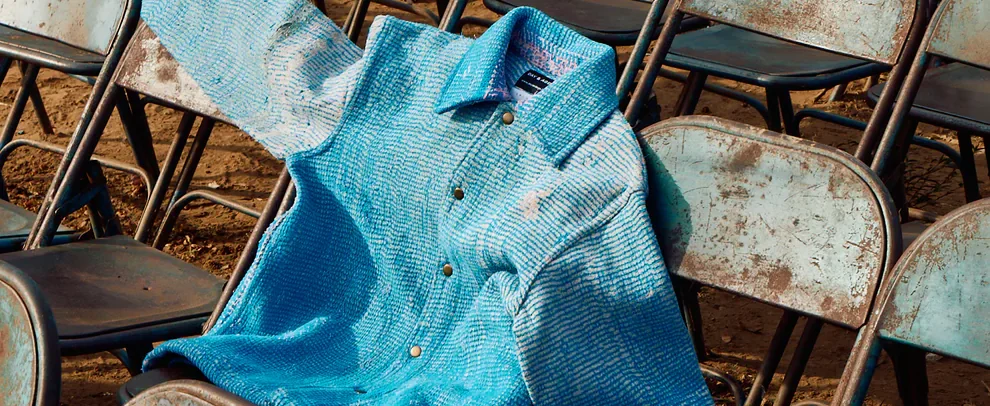
Written by: Manica Pathak
Text, Textile and Time might seem like disparate words to be strung into a sentence, yet for co-founders Shreya Parasrampuria, a textile designer and Sharan Adka, a graphic designer, they form the conceptual scaffoldings for Day & Age, a design and lifestyle label— whose sensibilities draw from the reserves of a slower more thoughtful approach. “Interestingly both ‘text’ and ‘textile’ derive from the same Latin root—texere—meaning ‘to weave’.” This etymological link and their converging histories—a topic that the founders explored extensively during their time as students at the National Institute of Design - Ahmedabad— somehow fit together like pieces of a puzzle and ultimately led to the founding of their label in 2023. Sharan adds, “For Shreya, the connection with textiles is more direct, while 'text' signifies the broader history of communication and graphics, which represents me. We examine both these elements through the lens of time, informed by various techniques, graphic movements, visual elements, and ideologies.” Reflecting further on this overlap, he continues, “We often associate pixels with the digital world, but textile weaving operates on a similar grid structure. Weaving is a precise, mathematical process—just like graphic design with typefaces or other intricate details.”

Sharan Adka, Co-Founder- Day & Age

Shreya Parasrampuria, Co-Founder- Day & Age
Drawing from her background—a niche that dives deeply into the technicalities of textiles—Shreya offers her insightful perspective on this as well, “The primary difference lies in the medium, whether it’s fabric, a screen, or paper, but the underlying principles and processes remain close. Fabric, for instance, is arranged on a grid with measurements like ends per inch (EPI) and picks per inch (PPI), echoing the concept of DPI in digital design," she explains.
With just over a year since its inception, Day & Age has already donned a diverse mix of both popular and emerging names in the industry. Yet, as Blur The Border delves into an hour-long interview with the founders, it’s clear they possess a grounded perspective, choosing not to vaunt their journey but focusing more on what they want their label to express — and it's only the beginning of the countless opportunities and avenues ahead.
“All of it may seem random, but it’s very intentional. When we create, storytelling is our guiding principle, so we don’t start with a predetermined craft or technique in mind. Instead, we approach each project intuitively, asking ourselves how we can best express the concept at hand and keep our main focus on the visual outcome—whether it is combining digital printing or hand embroidery.”
Shirts crafted from decades-old Kantha or applique fabric, wooden blocks carved in Sanganer, Rajasthan, bearing the print of Roman god, Janus, embroidered shirts critiquing the monotony of adulthood, a passage from Indian Majority Act 1875 embroidered on a shirt-pocket — are a few of the compelling elements that one would find at Day & Age. However, the part where all of the designs band together is the purpose and meaning behind each. “All of it may seem random, but it’s very intentional. When we create, storytelling is our guiding principle, so we don’t start with a predetermined craft or technique in mind. Instead, we approach each project intuitively, asking ourselves how we can best express the concept at hand and keep our main focus on the visual outcome—whether it is combining digital printing or hand embroidery,” says Sharan. As we continue to get to the heart of the label, anticipating a familiar narrative, one that often emphasizes a traditional approach to working with local artisans, Shreya is quick to assert, “An interesting point for us is that, although we work extensively with craft and techniques, we don't directly collaborate with the makers themselves.”
For instance, in our Bygone collection, we primarily use vintage or found fabrics,” she continues. These garments which can range anywhere from shirts, jackets, vests, overcoats and even bags are 1/1 that are impressions of the past— re-fashioned from what already exists. “In contrast, our Currents collection takes a different approach. It focuses on the present, where we produce items that are not one-of-a-kind, unlike Bygone.” she expands. The first edition of this collection, titled ‘All Grown Up,’ delves into the complexities of adulthood, offering commentary on the various factors that shape our understanding of it and the expectations that accompany it. It remains one of the primary factors that has also brought the label under several spotlights—celebrities and publications alike. Sharan notes, “Interestingly, most of our customers don't come to us specifically for the embroidery or a particular technique. They come for the concept, the story behind the work and the lifestyle we showcase, even before the commercial aspect comes into play,” he says.
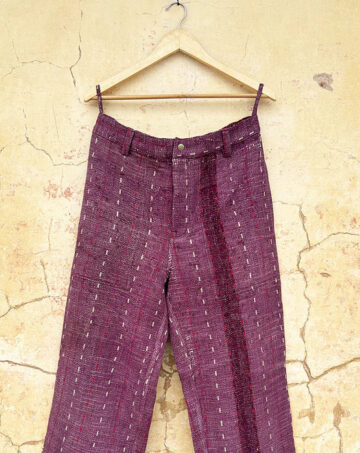

Bygones Collection.
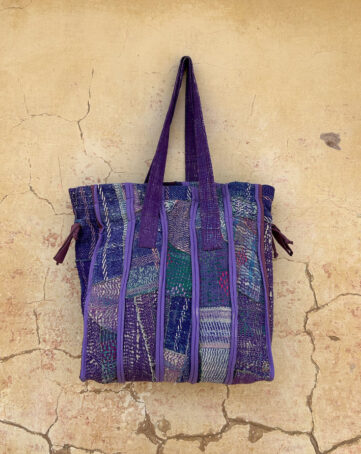
However, adding layers of deeper meanings or symbolism isn’t about dressing the label up or packaging it to seem superficially profound.“We pay attention to small details and create narratives for people who follow the brand closely. It isn't something we think about after the product is made. It's not even an afterthought when we ask ourselves, “What’s the story now? How can we sell this?” It develops simultaneously, as the design and creation process unfolds.” Sharan adds and continues to elaborate on how an overarching concept or an intangible vision is simmered down to threads and imagery in fabric pieces. “Many of the pieces in our Currents collection are named after oxymorons, like Clearly Confused or Strangely Familiar. These names reflect the confusing nature of adulthood, where you can feel like a child and an adult at the same time. When we begin the process, we start with a concept. Once we have that in mind, we think about what kind of visual could best describe it. For Clearly Confused, we envisioned a chaotic, organic, abstract surface, filled with many elements, almost overwhelming to look at in one go. There’s no clear path or direction in the design, symbolizing the nonlinear, mixed experience of adulthood. From there, we begin sketching and decide on how best to translate that into textiles. The textural component was important to us, so we chose chain stitch embroidery. As we develop the concept, we pull in metaphors from different aspects, translating them into techniques, visuals, colors—everything informs the larger idea.”
Eventually, this weaving of ideas, emotions and experiences into a narrative flows into everything they do. “From our social media captions, labels, campaigns or even the kinds of garments we make, sometimes, the narrative even grows during the photoshoot stage. Take the Parallels collection for instance—each caption was written like a journal entry, describing fictional events of the day in a few lines,” explains Sharan.
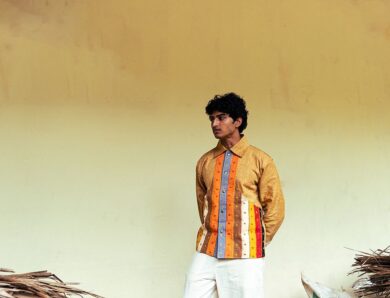
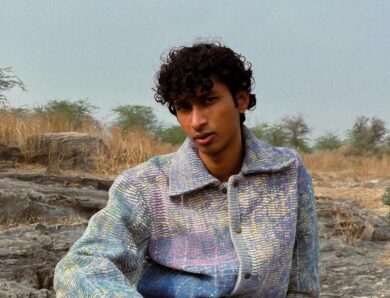
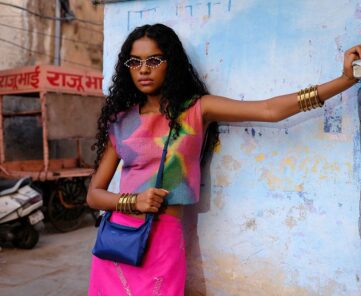
Although it is common knowledge by now that social media can be a murky space at times, with over a hundred posts that we collectively flip through daily; but the founders’ vigour as creative individuals has led them to balance their creative purpose with an understanding of how audiences will ultimately engage with their work. “Whether or not someone picks up on that is something we don’t always know, especially with Instagram, given the short attention span of users. For us, it’s never just about the product. That’s why we describe ourselves as a design and lifestyle brand, not just a clothing brand. Crafts only play a role in the stories we want to convey through our designs. So, we dont want to be pigeonholed as a brand that focuses solely on a specific craft. It's a reflection that sums up Day & Age’s collections where a variety of crafts exist —one piece may feature applique work from Rajasthan or Kantha from Bihar, another may combine both techniques, while yet another could be a jacquard weave on khadi cotton.
The founders’ decision to take the road less travelled is rooted in a belief that true dedication to craft should lead directly to the Indigenous artisans and craftspeople who are the living embodiment of that tradition. And in contrast, Shreya notes, “When customers approach a brand, it should be for the design, the setting, or how the product is presented, which plays a crucial role in how they connect with it. By creating a product and showcasing it in a way that resonates with their lifestyle, customers often engage with the craft, without even realizing it.”
Although it comes with its fair share of bumps in the road, even for labels trying to carve out a unique niche in the otherwise saturated fashion industry. Shreya explains, “Many people, apart from other designers, find it difficult to grasp the concept that these pieces can’t be reproduced in another size or what it means for a piece to be truly one of a kind. For them, the term is often a marketing adjective, rather than taken literally. It’s a major hurdle even with stockists who prefer to deal with SKUs.” With ‘vintage’ now a catchphrase in the industry, it also emerges that the term’s meaning is often lost in translation, amongst consumers.”In India, people have become more accepting of the aesthetic of handwork, but there’s still room for growth in terms of appreciating the uniqueness of vintage items. “The fabric might already be 30 or 40 years old, and it’s important to accept that character—its tears, patches, and irregularities. From a commercial standpoint, this presents challenges for stocking, both online and in-store to avoid double-selling. But this is a shifting landscape, and the changes are happening in the industry,” she explains.
A little more than a year old, the future of Day & Age is something to look forward to. "When we started, we knew clothing would be just one part of what we do. Flexibility with mediums and outputs and exploring diverse creative avenues are key to our label—whether ceramics, furniture, posters, or digital projects. Right now, we’re focused on clothes and textiles, but we’re not confined to any single definition,” emphasizes Sharan.
As young designers steering their label through the complexities of an industry that often demands bold declarations and disruptive ambitions, Shreya and Sharan stand out for their unrestrained creative spirit and refreshingly unconventional approach to business. Unfazed by the pressure to ‘make a dent,’ their energies and expertise only complement each other in cultivating a vision that’s as authentic as it is unapologetically unique. “Honestly, we don’t take ourselves too seriously. People have told us that our business approach is unconventional—like making one piece at a time or not focusing on sizes. I think it’s important to do what feels right, to have your own voice, and to avoid just saying what’s expected. We don’t have grand ambitions of shattering ceilings or making a huge industry impact. We’re just here, doing what we love," they conclude.